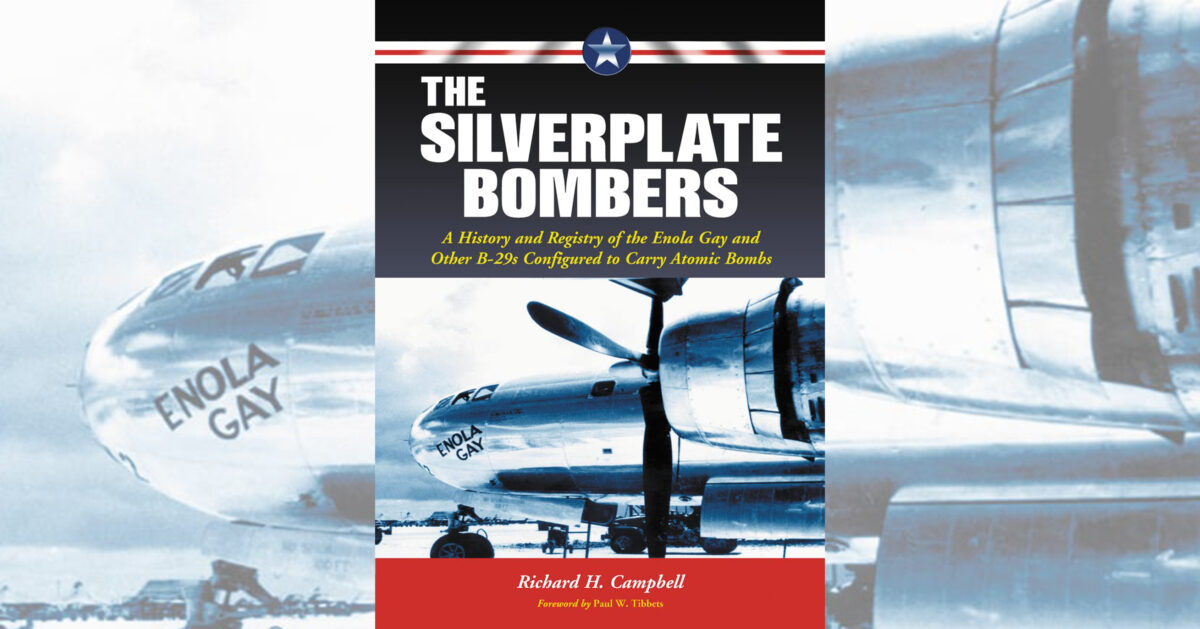The Silverplate Bombers by Richard H. Campbell, McFarland & Co., Jefferson, N.C., 2005, $45.
At first glance, the title may seem to refer to the shiny aluminum Boeing B-29 Superfortresses chosen to carry the atomic bomb near the end of World War II, but as U.S. Air Force Brig. Gen. Paul W. Tibbets mentions in his foreword, it actually relates to the project name of the airplanes selected for that type of mission. Aside from the two most famous B-29s that actually dropped atomic bombs, there were 63 other “Silverplate” configured Superfortresses built. Today only two of those remain, Enola Gay and Bockscar, which dropped the two atomic bombs on Japan in 1945. Enola Gay is on display at the Smithsonian Institution’s Udvar-Hazy Center at Washington-Dulles International Airport, and Bockscar is at the National Museum of the U.S. Air Force near Dayton, Ohio.
The cover blurb describes the book as “A History and Registry of the Enola Gay and Other B-29s Configured to Carry Atomic Bombs.” Not exactly an inviting description, but it turned out to be fascinating. There is background on the aviation facilities developed to support the project and information about the bombs themselves, as well as the 509th Composite Group headed by Tibbets that flew the Silverplate bombers. I was particularly interested in the “pumpkin” bombs, used for testing the aerodynamics of the atomic bombs but filled with conventional explosives and used on actual combat missions.
This book might have been intended as a reference tool, but it also offers a surprising amount of entertaining reading and illuminating background on a subject that will never lose its historic appeal.
Originally published in the March 2006 issue of Aviation History. To subscribe, click here.





